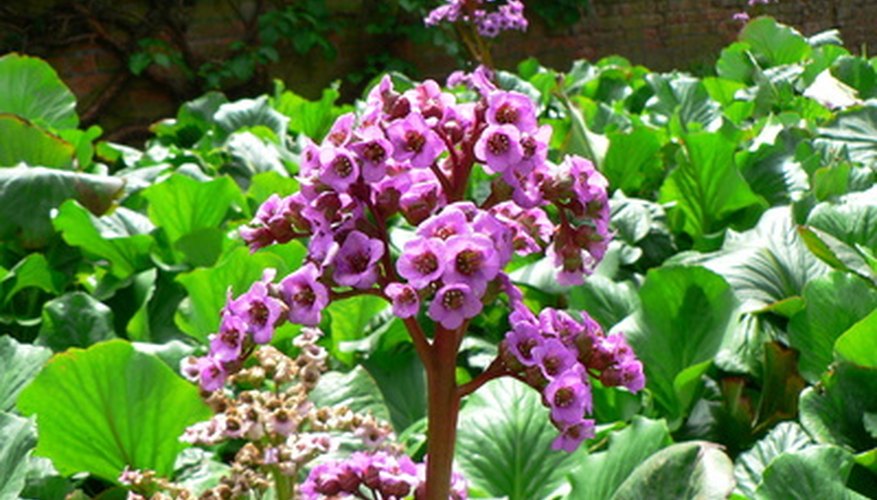Bergenia is a flowering perennial native to the Himalayas and China, and given to vigorous growth. It propagates through thick rootstocks, producing clumps of new ground cover. Its leaves are large, thick ovals and the pink blossoms bloom April through June. The Royal Horticultural Society reports that bergenia is hardy and can survive Britain's harshest winters. It prefers full sun, moisture and nutritious soil. Every three to four years, divide crowded clumps of bergenia in late winter or early spring.
- Bergenia is a flowering perennial native to the Himalayas and China, and given to vigorous growth.
- The Royal Horticultural Society reports that bergenia is hardy and can survive Britain's harshest winters.
Prepare the site for the bergenia divisions by mixing the topsoil with organic matter, such as compost. Rake the surface to a smooth bed and make planting holes.
Dig with a shovel at the drip line of the plant you're dividing. The drip line is directly under the end of the bergenia's longest stem. Loosen the soil going around the plant in a circle.
Reach under the roots and lift the plant out of the ground.
- Dig with a shovel at the drip line of the plant you're dividing.
- Reach under the roots and lift the plant out of the ground.
Shake the excess dirt off the roots and separate the clumps by hand.
Move the clumps immediately to their new planting holes, because the roots won't tolerate drying out.
Water the bergenia clumps thoroughly at transplanting. Repeat it every two days until you see new growth. From then on, reduce irrigation, but continue to keep the ground moist at all times.
